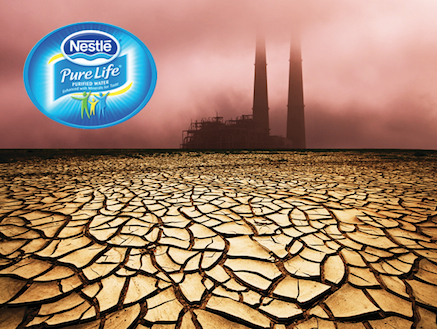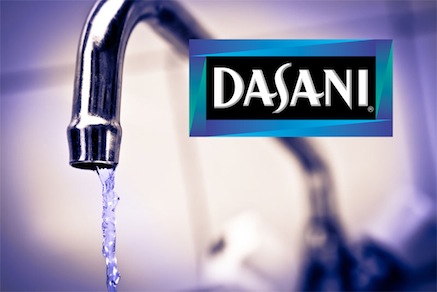Dirty water. Bad branding.
(Yesterday was World Water Day. Will Novosedlik, a friend from Toronto, shared a piece from his blog with me, which I have re-posted below with permission. I have always found the issue of bottled water replacing tap water in the so-called “developed” world to be ludicrous).
Water. Once it’s mined, shipped, packaged and merchandised, it’s more expensive than gasoline. And while we’re busy burning tonnes of fossil fuel to ship it across countries and continents, we’re also spending countless billions sending probes into outer space in search of more. Because where there’s water, there’s life. And where there’s life, there are markets and customers, right?
From Nestle Waters‘ annual 265 million litre harvest of BC groundwater (cost to Nestle? $0) to Dasani being outed as marginally enhanced municipal tap water, some big brands are quietly draining the global well for private gain. And while they’re draining what most would consider a publicly shared asset, they’re not only depleting our H2O reserves, they’re also indirectly responsible for polluting the very same global resource with trillions of empty plastic containers.
What we have here is branded planetary degradation. Not that brands playing havoc with natural resources is anything new (think bp in 2010), but the extent of this particular kind of cognitive dissonance— i.e., the contradiction between brand image and actual experience— is off the charts. While ‘purity’ is the pitch, the stats tell a shockingly different story.
To manufacture and ship a one kilogram bottle of Fiji brand bottled water to the US, it takes 26.88 kilos (7.1 gallons) of water, 1 litre of fossil fuel, and it emits 1.2 lbs of greenhouse gas per litre along the way. Bottles used to package water take 1,000 years to biodegrade. Incinerating them produces toxic gases. It’s estimated that 80% of plastic water bottles end up in landfill instead of being recycled. In the US, water bottle manufacturing requires 1.5 million barrels of oil annually. And 90% of manufacturing costs are for the bottle, the cap and the label.
Stats like these give the lie to the language used to sell these brands. Science has proven that tap water is not only just as clean, but much more rigorously and frequently tested for impurities. That explains why brands like Dasani just turn on the tap to fill their bottles. It’s why Aquafina can say “Purity Guaranteed.” Then they add a few nutrients and sell it back to us at an obscene markup.
According to Dr. Michael Warhurst, Friends of the Earth‘s senior waste campaigner, bottled water “is another product we do not need. Bottled water companies are wasting resources and exacerbating climate change. Transport is the fastest growing source of greenhouse gas emissions, and transporting water adds to that. We could help reduce these damaging effects if we all simply drank water straight from the tap.”
It is a classic case of the devil chasing his own tail. The bottled water industry not only depletes an already available and fundamental resource, but its manufacturing and distribution are contributors to the climate change that is on track to drive more drought, greater environmental degradation and escalating conflict as parched populations fight over our most precious resource. It’s a lose-lose if ever there was one.
This is an opportunity for these brands to show some real leadership. They are global giants with the power and capacity to absorb the short term losses that would result from exiting the business. What they would gain is hero status for doing so. wn




